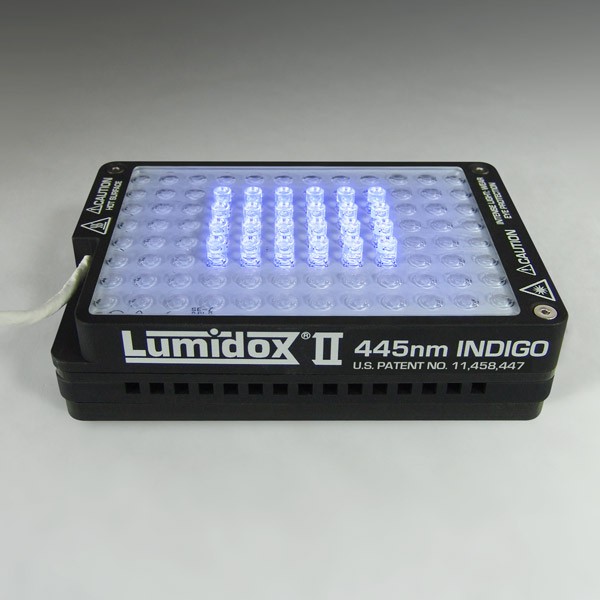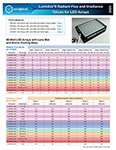Lumidox® II LED Arrays
U.S. Patent No. 11,458,447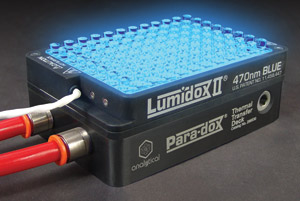
Analytical’s patented LED arrays provide wavelength and power specific illumination to samples for photoredox catalysis applications.
- Up to 15 different color wavelengths are available*
- 5 output STAGES (customizeable) with calibration data stored on board**
- Available in two Surface Mat styles
- Three options for Base configurations
(see the expandable section below: "Learn more about LED Arrays")
Lumidox II LED Arrays are available in up to 15 wavelengths*:
365nm UV, 375nm UV, 385nm UV, 395nm UV, 405nm UV, 420nm-Violet, 445nm-Indigo, 470nm-Blue, 505nm-Cyan, 527nm-Green, 590nm-Amber, 630nm-Red, 660nm-Deep Red, 730nm-IR Infrared and White. Note: LUM2CON controller is required to power LED arrays.
365nm UV, 375nm UV, 385nm UV, 395nm UV, 405nm UV, 420nm-Violet, 445nm-Indigo, 470nm-Blue, 505nm-Cyan, 527nm-Green, 590nm-Amber, 630nm-Red, 660nm-Deep Red, 730nm-IR Infrared and White. Note: LUM2CON controller is required to power LED arrays.

* Most LED arrays (excluding Discovery) are wavelength-specific - only one wavelength per device
** Calibration data is stored onboard (not on the controller), allowing the use of different illuminators with one controller. Controller can only operate 1 device at a time. STAGE settings are NOT user-adjustable and must be configured prior to shipping
** Calibration data is stored onboard (not on the controller), allowing the use of different illuminators with one controller. Controller can only operate 1 device at a time. STAGE settings are NOT user-adjustable and must be configured prior to shipping
Learn more about LED Arrays -
Surface Mat Styles
Array top surfaces come in two styles, Lens Mat and Diffuse Mat.

Lens Mat Surface
- Ultra-clear, molded to fit into the holes of a Para-dox® Reaction Block
- Captures nearly all light emitted by the array’s LEDs and directs it into the vials in the reaction block
- Chemically inert silicone
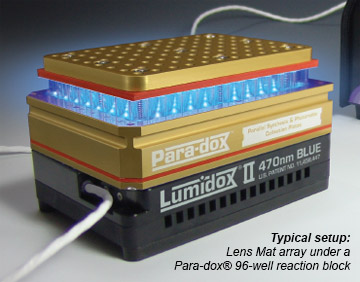

Diffuse Mat Surface
- Flat surface, making for easy pairing with SLAS footprint apparatus
- Can be used for niche applications such as illuminating cell culture flasks, reservoir plates, large scale containers, etc.
- Chemically inert silicone
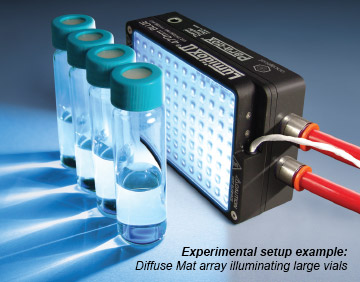
About Array Cooling and Base Options
Lumidox® II LED Arrays can generate a considerable amount of heat at any output stage and therefore need to be cooled. Both Lens Mat and Diffuse Mat style arrays are available with an Active Cooling base, Solid base or Flow-Through base. Each has it’s own specific way of cooling the LEDs in the array and can affect different application situations.
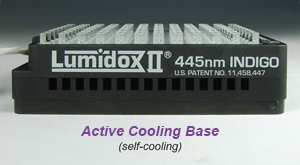
Active Cooling Base:
- Self-cooling, no external cooling source required
- Fully conforms to SLAS/ANSI standard dimensions
- Ideal for lower output applications like cell culture and PCR work (may require special adapter)
- Not compatible with tumble stirrers or devices that generate powerful magnetic fields
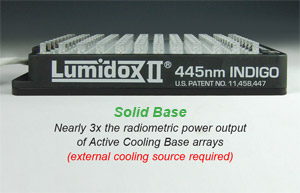
Solid Base:
- External cooling source is required (see Thermal Transfer Deck)
- A Thermal Transfer Deck (TTD) is recommended and can be attached to the base when used in conjunction with a recirculating chiller. The TTD can be removed if using a different cooling source, such as a cooling bay
- Fully conforms to SLAS/ANSI standards and can be used with cooling baths, plates, or other cooling chamber (if NOT being used with our Thermal Transfer Deck and recirculating liquid chiller)
- Ideal for applications requiring high output - up to nearly 3x more radiometric power output than Active Base arrays
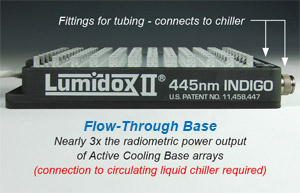
NEW! Flow-Through Base:
Note: Flow-through base LED arrays can only be used with an independent, dedicated recirculating chiller circuit. They cannot be daisy chained with any other hardware.
- Provides the most optimal cooling efficiency for LED arrays
- Direct connection to recirculating liquid chiller (required). Cooled liquid flows through the array base itself (no need for Thermal Transfer Deck)
- Ideal for applications requiring high output - up to nearly 3x more radiometric power output than Active Base arrays
- Light Weight – improved usability with orbital shakers due to lower overall mass
- Shorter overall height than active base array – offers improved compatibility with tumble stirrers (less distance between stirrer and sample)
Note: Flow-through base LED arrays can only be used with an independent, dedicated recirculating chiller circuit. They cannot be daisy chained with any other hardware.

For added protection, each device has a built-in thermal cutoff switch that, in case of overheating, will automatically shut down the unit. The trip temperature for Solid Base and Flow-thru Base Arrays is 95°C, and will reset when cooled to 65°C. Active Cooling Base Arrays will shut down if their temperature exceeds 75°C. They will reset once they have cooled to 45°C.
Note: Active Cooling Base arrays are not compatible with strong magnetic fields such as those found in most tumble stirrers due to interference with the cooling fans.
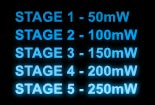 |
Lumidox® II STAGES By default, all Lumidox II devices are factory calibrated with 5 discrete linearly stepped output STAGES... |
Lumidox® II STAGE Selection
By default, all Lumidox II devices are factory calibrated with 5 discrete linearly stepped output STAGES (Example 1, below). STAGE 1 output is the least radiometric power while STAGE 5 output is the most. For LED arrays with Active Cooling Stage bases, STAGE 5 thermal dissipation requirements are configured to an appropriate level for each device's built-in thermal satisfaction abilities. STAGE 5 defaults for Passive (solid) Base Arrays are tuned to be thermally satisfied with an average powered chiller in thermal contact with the array base. STAGES are calibrated to nearest whole number of radiant flux, and displayed in milliwatts (mW).
Analytical Sales & Services offers custom tuned stages to meet specific and unique requirements. A user, for example, may have a more sophisticated cooling mechanism and require an array tuned for maximum light output. In this scenario, Analytical would tune the upper STAGES to higher levels than typically thermally controllable by standard users (Example 2). In another example, a user may have a need for a tighter resolution of STAGES (Example 3).

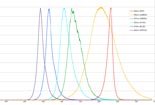 |
Typical Spectral Characterization
|
 |
Typical Spectral Characterization
|
UV Wavelengths
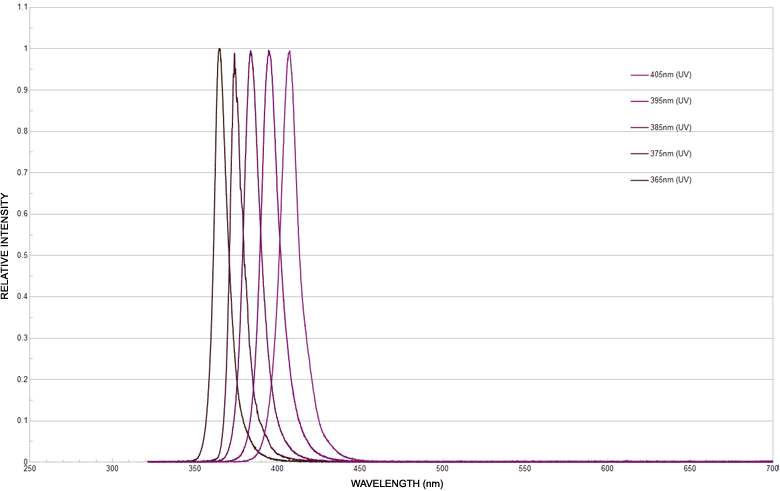

 |
Typical Spectral Characterization
|
Visible Wavelengths
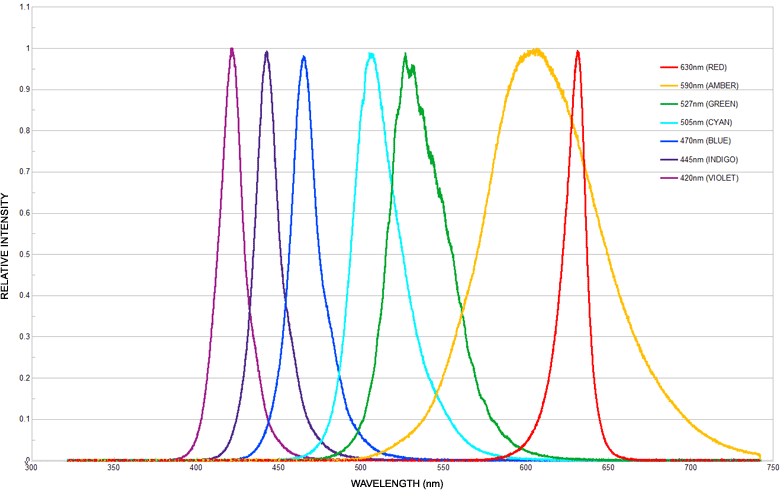

 |
Typical Spectral Characterization
|
Broad Spectrum Wavelengths
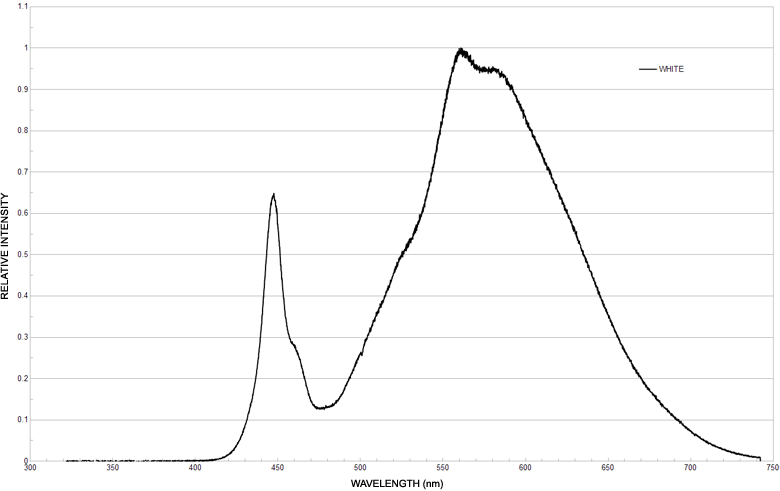

 |
Typical Spectral Characterization
|
Infrared Wavelengths
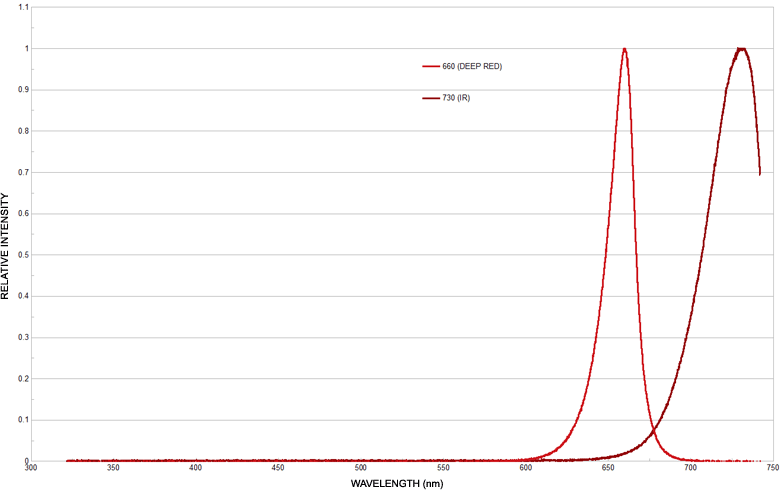

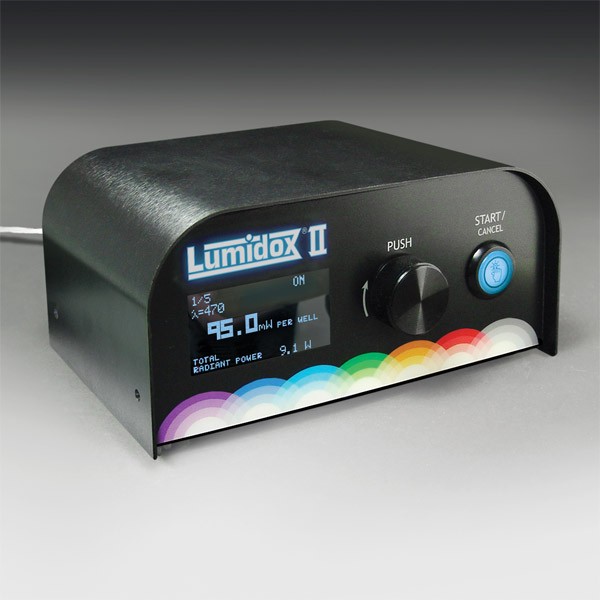
Lumidox® II Controller
Lumidox II Controllers are manufactured in-house. Optical power levels are provided in easy to read, easy to calculate, whole numbers. Simply scroll through the menu to...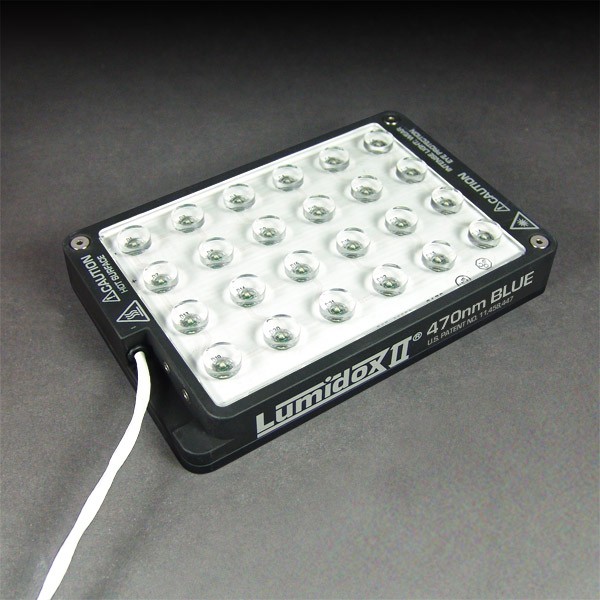
LED Arrays for TCR
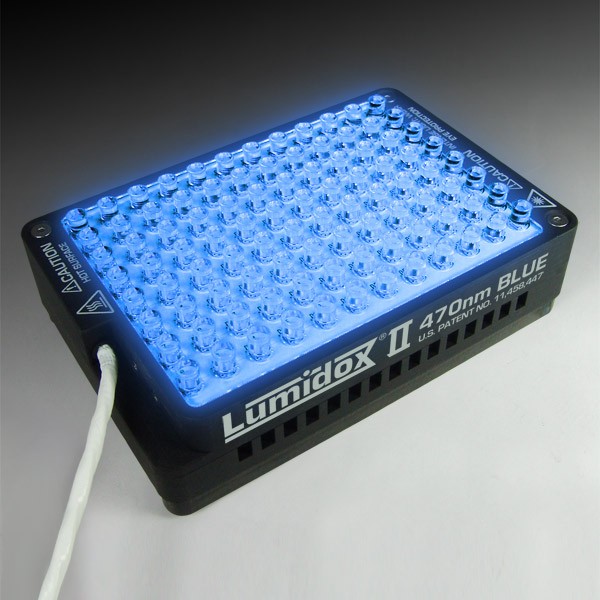
96-Position, Single Wavelength LED Arrays
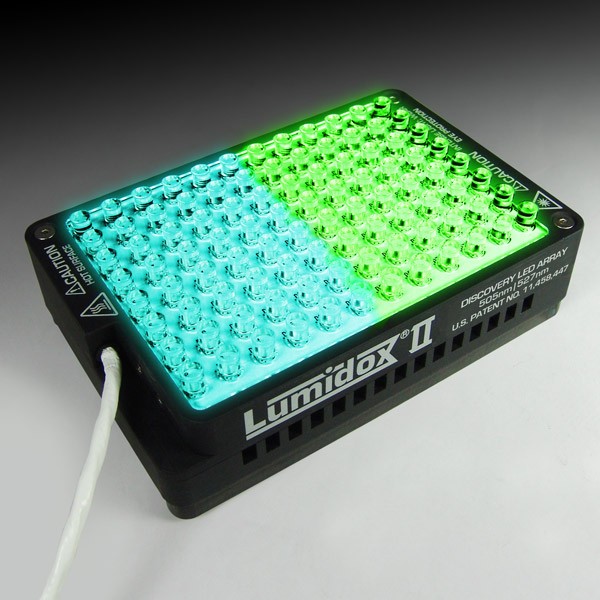
96-Position Discovery LED Arrays
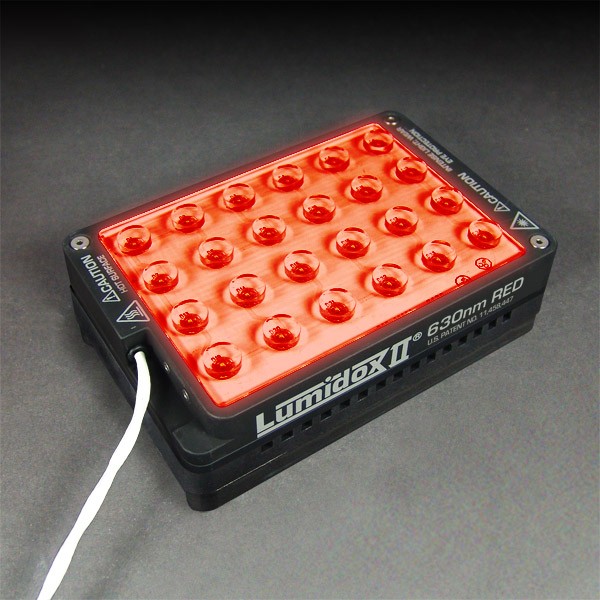
24-Position, 18mm Spacing LED Arrays
U.S. Patent No. 11,458,447 Use with Para-dox® 24-Position Aluminum Reaction Blocks with 18mm Spacing for photoredox catalysis applications.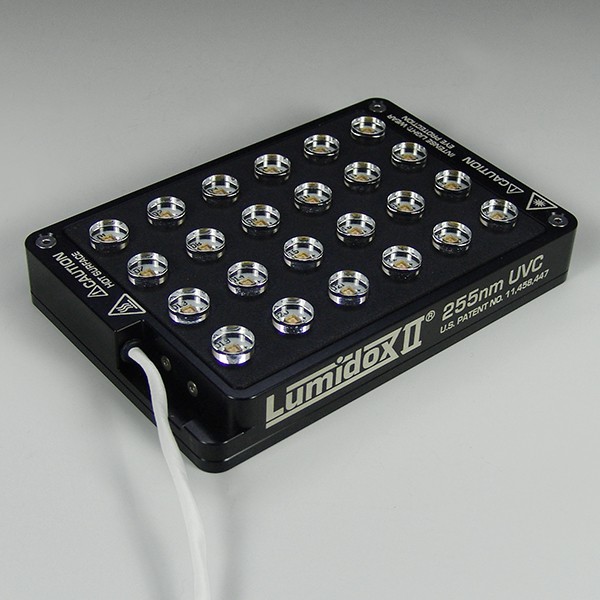
24-Position, 255nm-UVC Arrays for Quartz Vials
Our 255nm UVC wavelength LED Array opens the door to exciting new applications—from high-energy photochemistry to polymer resin curing and surface disinfection—making...